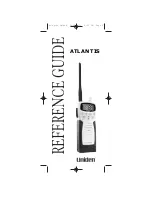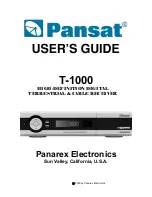
DW1000 User Manual
© Decawave Ltd 2017
Version 2.12
Page 216 of 242
In addition the quarter symbol interval is sub-divided into 2, 4, or 8 sub-intervals and a pseudo random
sequence used to determine both the burst shape and which of the sub-intervals are actually used for the
burst transmission. This gives more immunity to interference and whitens the output spectrum allowing a
higher signal power to be used in the transmitter.
Forward error correction (FEC) is also included in the PHR and Data parts of the frame. The 19-bit PHR
includes a 6-bit single-error-correct double-error-detect (SECDED) code and the data part of the frame has a
Reed Solomon (RS) code applied. The RS code does not reduce the data rate, as rate quoted includes
allowance for the RS code already. Both SECDED and RS codes are systematic meaning that the data can be
recovered without using the codes (and of course not benefitting from them in that case).
The data part of the frame may be at data rate of 110 kbps, 850 kbps, 6.8 Mbps, or 27 Mbps nominally,
(these figures include a 0.87 factor of reduction on the actual symbol rate to account for the overhead of the
Reed Solomon code).
For the 850 kbps, 6.8 Mbps, and 27 Mbps data rates, the 19-bit PHR part of the frame is transmitted as per
the 850 kbps encoding, but without the Reed Solomon code, so their bit rate is just less than 980 kbps. For
the 110 kbps data rate the PHR is transmitted as per the 110 kbps data coding, again without the Reed
Solomon code, giving them a bit rate is just over 120 kbps.
The DW1000 supports 110 kbps, 850 kbps, and 6.8 Mbps data rates but does not support the 27 Mbps data
rate.
10.3 Synchronisation header modulation scheme
The Synchronisation Header (SHR) consists of the preamble sequence and the SFD (start of frame delimiter).
In contrast to the BPM/BPSK modulation used for the PHR and data, the synchronisation header is made up
of single pulses. The symbol is divided into approximately 500 “chip” time intervals, (496/508 depending on
16/64 MHz PRF
), in which either a negative or a positive pulse may be sent, or no pulse. The “chip” interval
is 499.2 MHz, a fundamental frequency within the UWB PHY, and so the resultant symbol times are thus
496
/
499.2
µs for 16 MHz PRF, and
508
/
499.2
µs for 64 MHz PRF, (see Table 60 below).
The sequence of pulses actually sent during the symbol interval is determined by preamble code. The
standard defines 8 different length-31 preamble codes for use at 16 MHz PRF and 16 different length-127
preamble codes for use at 64 MHz PRF. The standard nominates particular codes for particular channels so
that at 16 MHz PRF there are just two to choose from per channel, while at 64 MHz PRF there is a choice of
four codes per channel. The length-31 codes are spread by inserting 15 zeros for each code point to give the
496 chip times per symbol while the length-127 codes are spread by inserting 3 zeros for each code point to
give the 508 chip times per symbol. The preamble length is defined by how many times (i.e. for how many
symbols) the sequence is repeated. This is determined by the configuration of preamble symbol repetitions
(PSR).
10
The DW1000 supports average pulse repetition frequencies of 16 MHz and 64 MHz
















































